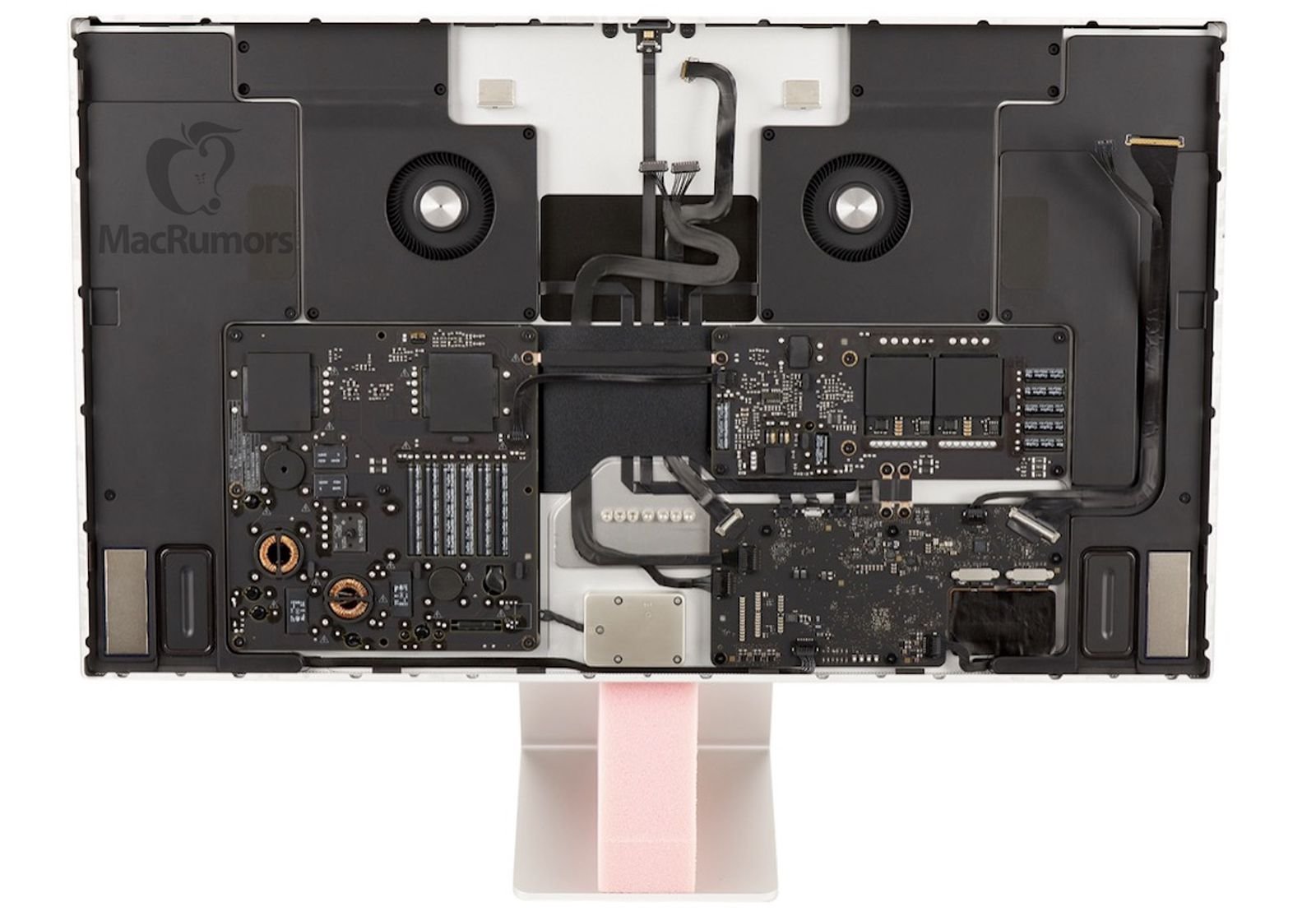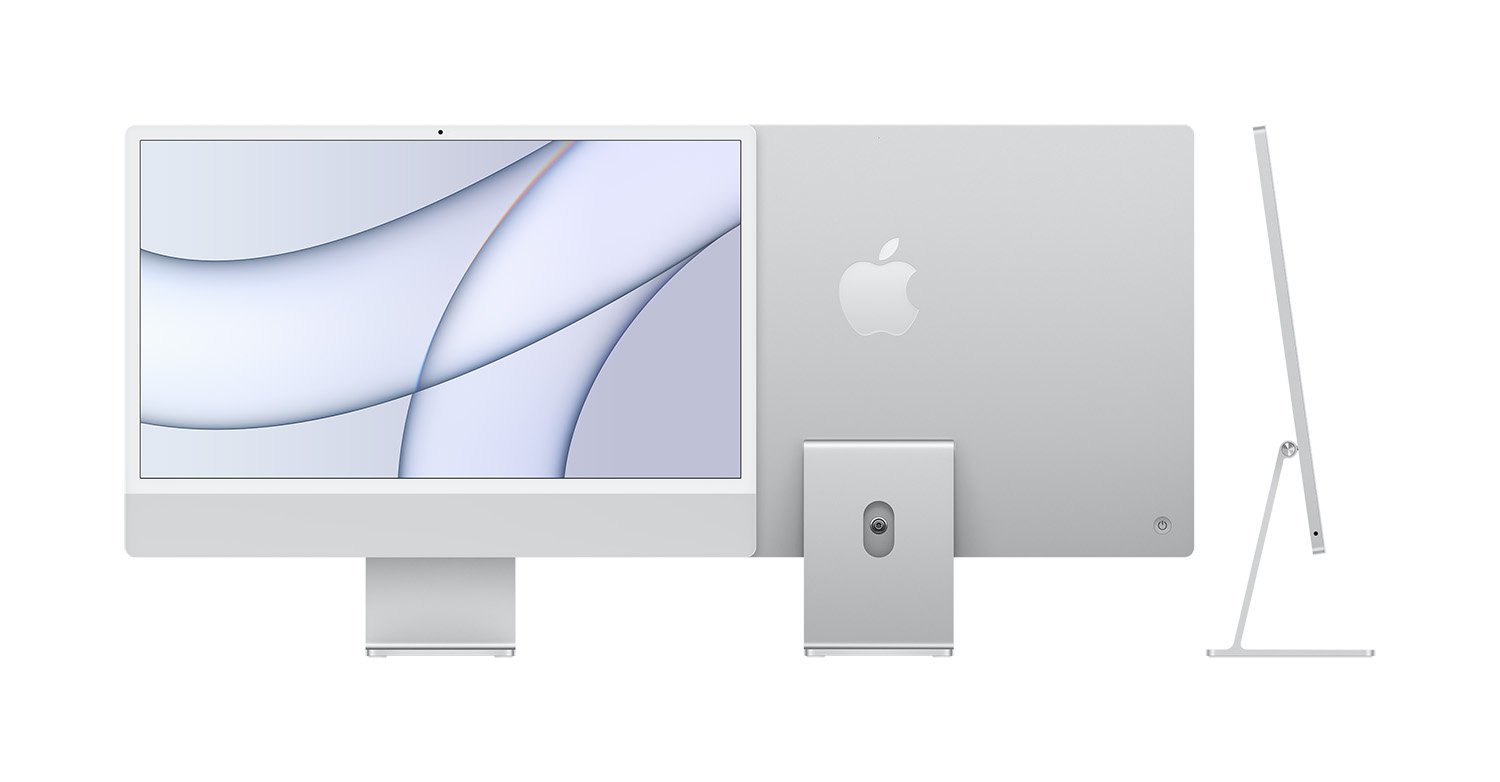I still believe in the iMac Pro
Source: MacRumors
Ever since Apple’s Peek Performance event at the beginning of the month, there has been a ton of chatter on blogs and on Twitter about Apple scrapping the idea of an iMac Pro. The general sentiment is that the new Mac Studio with the Studio Display fills the needs of any pro that might have otherwise opted for an all-in-one, while some publications have gone so far as to say they have “exclusive” information that Apple has “no plans” to release a high-end iMac. I think they’re all wrong. Here’s why.
The 27-inch iMac had been a staple of the Mac lineup since 2009. In 2017, Apple offered a variation of that form factor as the iMac Pro, with more powerful Intel Xeon processors and an awesome Space Gray finish. That machine was meant to be a stopgap for people who needed a more powerful Mac while Apple readied the 2019 Mac Pro. The iMac Pro was never upgraded, and by 2020, the regular 27-inch 5K iMac had mostly caught up to it in terms of performance, so in March of last year, the iMac Pro was discontinued.
Source: AppleInsider
Then, alongside the Mac Studio and Studio Display announcement a couple of weeks ago, Apple discontinued the 27-inch 5K iMac as well.
Now there’s pretty noticeable hole in Apple’s desktop lineup in terms of performance, price, naming conventions, and even colors. That’s why I still believe we’ll get an iMac Pro at some point.
To start, where is the M1 Pro? Apple’s laptops currently offer three progressively more powerful chip options: M1, M1 Pro, M1 Max. There are options all the way across the pricing spectrum so you can get what you need and stick to a budget without compromise.
The desktop situation is quite different at the moment. Your options are currently: M1 in the iMac or Mac mini, or M1 Max or M1 Ultra in the Mac Studio (omitting the last remaining Intel Macs).
Screenshot: Apple
Almost every review of the Mac Studio that I’ve come across has said the same thing: the Mac Studio is overkill for most people. There’s still room (and I’d argue, a need) for an M1 Pro desktop. I believe there are many people like me that want more performance CPU cores, GPU cores, ports, and memory than the M1 offers, but don’t need the M1 Max (or want to spend that premium).
Speaking of spending a premium, the jump from a $1,299 iMac that includes a display, keyboard, and mouse to a $1,999 Mac Studio that includes none of those things is ridiculous.
Source: Apple
The argument made by most of the iMac Pro deniers is that the Mac Studio with the Studio display is meant to fill the gap between the M1 iMac and the Mac Pro. So they’re saying that someone who might have otherwise spent between $1,799 and $1,999 on the more “pro” level 27-inch 5K iMac would be fine spending $3,599 for a setup that doesn’t come with a keyboard or a mouse. What?
There’s plenty of room for a $1,999 all-in-one solution. The base model iMac Pro’s specs could look exactly like the 14-inch MacBook Pro: M1 Pro with an 8-core CPU and 14-core GPU, 16GB of unified memory, 512GB of storage, and it’s all upgradeable from there. In fact, the entire spec sheet, upgrades and all, should look nearly identical to the MacBook Pro. I wouldn’t even expect it to be offered with the M1 Ultra since that requires a much more robust cooling solution (the M1 Ultra version of the Mac Studio weighs 2 pounds more than the M1 Max version because it has a copper heat sink instead of aluminum).
Screenshot: Apple
I say “nearly” identical because I do think Apple could tweak the port situation a bit. The MacBook Pro doesn’t have any legacy USB-A ports, but I think most people would want two of them on a desktop (like the Mac Studio pictured above). I’m not sure an iMac Pro would need an HDMI port, but some people may appreciate it. To create differentiation, the M1 Pro version could have two Thunderbolt 4 ports and two USB-C ports, while the M1 Max version could bump all four to Thunderbolt 4. Apple could even stick with the same 27-inch 5K display that the new Studio Display shares with the old iMac. And maybe stick an SD card slot on the side along with a pro audio jack. Doesn’t this sound like the perfect Mac desktop?
In fact, the Studio Display is almost a Mac itself. Its internals (pictured below) contain what is basically an entry-level iPad, with an A13 Bionic processor and 64GB of storage. The processor controls the camera, speakers, mics, and “Hey Siri” functionality while the storage allows it to receive software updates. Swap the A13 for the M1 Pro and you have an iMac Pro. Done deal. (ok, maybe it would need a better thermal solution, but you get my point).
Source: MacRumors
Then there’s the name. Almost everything Apple sells has both a regular and a pro version. iPhone/iPhone Pro, AirPods/AirPods Pro, iPad/iPad Pro, MacBook Air/MacBook Pro, Mac mini/Mac Pro. Only a few consumer products leave out the pro option: the Apple TV, HomePod mini, and Apple Watch (which was recently rumored to gain a pro version). The iMac seems lonely without a pro sibling.
There’s another Apple standard that’s offered almost everywhere except the iMac: Space Gray. Every single Mac offers a Space Gray option except the iMac, the Mac Studio and the Mac Pro. Maybe Apple has decided that professionals should only be allowed a silver computer, but I doubt it.
What’s more important than the color of the machine is the color of the bezels around the screen. The M1 iMac has light gray bezels, which a lot of people hate (it’s also the only Mac with these bezels, at least until the rumored colorful MacBook Air redesign). Apple’s reasoning is that this particular iMac is meant to be used in bright office spaces, not dark studios, so the lighter bezels help the device disappear while you’re using it. I think it’s crazy that Apple doesn’t offer a Space Gray iMac with black bezels for people who will use it in a dark room.
Courtesy: Apple
Lastly, Mark Gurman still believes there will be an iMac Pro, and I put a lot of faith in that. Gurman writes for Bloomberg and is one of the top Apple analysts out there, so when he talks, (most) people listen. He recently set up a live Twitter Space to answer general questions from the audience, and toward the end of the broadcast, he unequivocally said that there will be an iMac Pro and that it would make no sense for Apple to expect customers to purchase a Mac Studio with a Studio Display as a replacement for a pro all-in-one. The quote was “Does that sound like the Apple you know? Not me.”
According to Gurman, this is what Apple’s Mac lineup should look like by the end of 2023 when the Apple Silicon transition is complete:
Pro:
MacBook Pro (14 inch and 16 inch) with an M2 Pro and M2 Max
iMac Pro with an M2 Pro and M2 Max
Mac Studio with an M2 Max and M2 Ultra
Mac Pro with an M2 Ultra and M2 Extreme
Apple Pro Display 7K
Consumer:
MacBook Air with an M2
MacBook Pro (13 inch) with an M2
Mac mini with an M2 and an M2 Pro version to replace the Intel model
iMac with an M2
Apple Studio Display
During the Peek Performance event, Apple’s senior VP of hardware engineering, John Ternus, commented that the only Mac left to transition to Apple Silicon was the Mac Pro. People have taken this to mean that there are no other Macs in the pipeline, which is just a ridiculous notion. The Mac Pro is a distinct product line that doesn’t currently have an Apple Silicon version, so yes, the only Mac left to update is the Mac Pro. That doesn’t mean they aren’t developing an iMac Pro or a more powerful Mac mini to replace the aging Intel version.
So yes, I fully expect to see an iMac Pro at some point in the future. I’m clinging to the hope that it’ll be announced at WWDC this June. Recent rumors have pointed to the first M2 Mac (that redesigned MacBook Air mentioned above) releasing near the end of 2022, putting the Apple Silicon update cycle at a full 2 years. If that’s the case, I would expect any remaining M1 Pro/Max machines to be announced in June so that Q4 can be all about the M2. As always, we’ll have to wait and see.
What do you think? Are you holding out for an iMac Pro or do you think the $3,599 Mac Studio and Studio Display combo is a reasonable option? Let me know in the comments!






